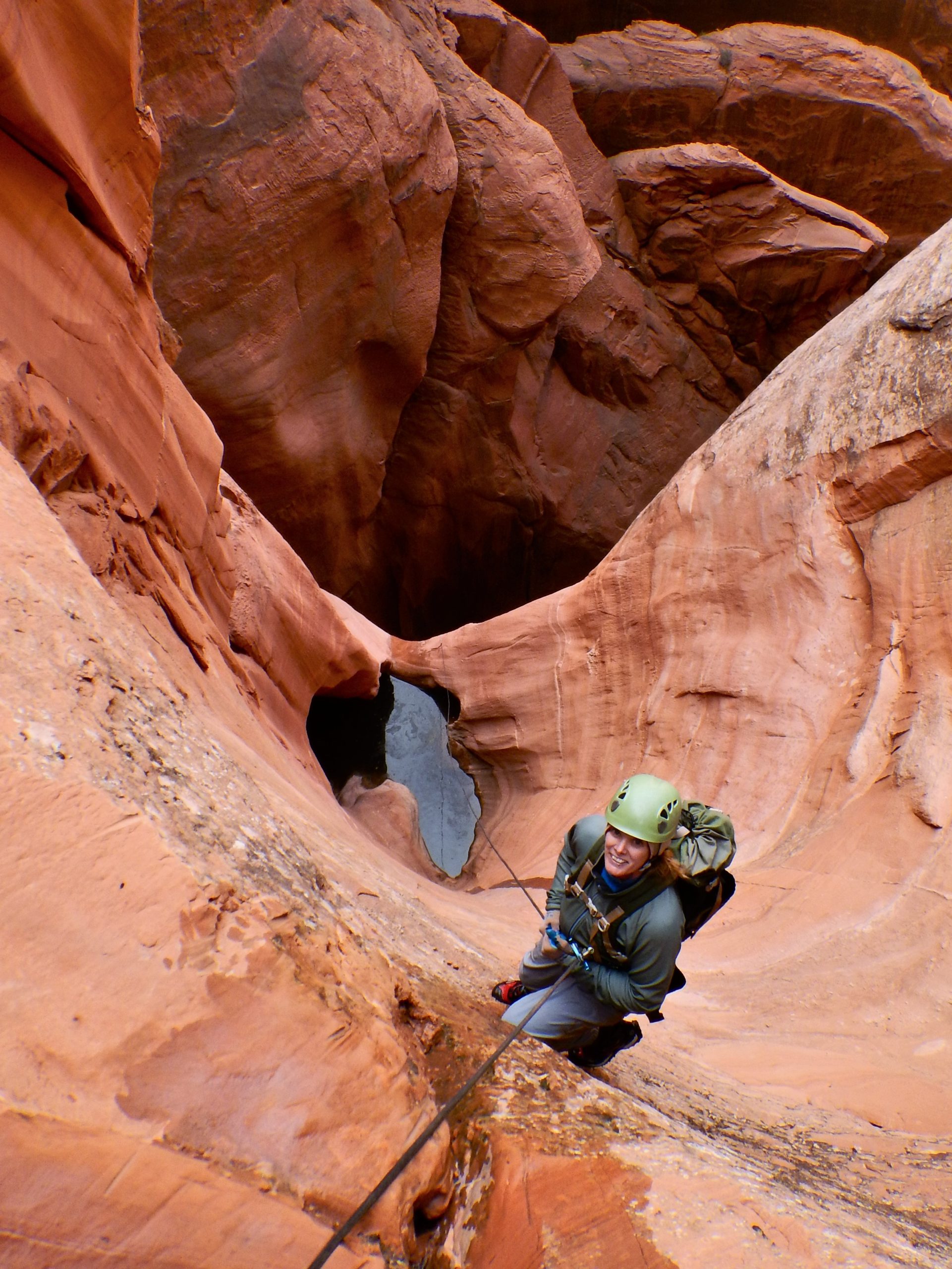Some information may be outdated.
Deep in the sandstone slot canyons of southern Utah, timeless narrow passages glow in orange light filtered from high above. Images like this have drawn increasingly more people to the sport of “canyoneering,” or canyon rappelling, which uses ropes to descend and traverse these unique geologic features.
Brett Sutteer, owner of the local guide company Cliffs and Canyons, will present “The Evolution of Canyoneering” at the Grand County Public Library on Thursday, Feb. 21, from 6 to 8 p.m.
“There’s definitely a lot of colorful history in how canyoneering came to be,” Sutteer said.
His talk will touch on some of the earliest known visitors to these deep canyons, the Ancestral Puebloans.
“In some of these areas that we go to,” he said, “we’ll get in to some big, deep pothole, and we’re having all these challenges — how to get in to the pothole, how to get back out of the pothole — and we’ll look, and on the side of the wall, they’ll be ‘moki steps.’”
Moki steps are hand and foot holds scraped into the rock thought to be made by indigenous people. Sutteer said that when rock climbers from Salt Lake City began making trips to southern Utah in the 1970s and descending into canyons using these techniques and steps, these remote and risky trips were thought to be too dangerous to publicize.
“Some of these characters were doing these really out-there explorations,” Sutteer said.
To ensure they would be able to make it all the way out, the canyon rappellers hammered bolts into the sandstone to create anchors from which they could safely rappel.
“That did set the tone for allowing bolts to proliferate in some of these areas,” Sutteer said.
Since those early bolts were placed, the outdoor industry has grown, gear has become more advanced and available and information is being shared. This combination of factors is allowing more people to access these remote places.
Ten guide companies listed on the Discover Moab vacation planning website include “canyoneering/climbing” as one of their offerings. With increased traffic and improved gear, proponents of the sport have begun to shift toward techniques that leave less of an impact on public lands.
“There is a different approach than permanently altering the rock in the canyons by bolting or leaving gear behind,” Sutteer said.
Alternatives include devices like the “Fiddlestick,” produced by Imlay Canyon Gear. It’s a strong plastic rod that is inserted into the anchor knot for a rappel line. At the bottom of the rappel, the Fiddlestick is retrieved with a pull cord, releasing the rope and leaving nothing behind. This technique also avoids creating “rope grooves” in the rock.
“The canyon is carved through the softest layer of sandstone,” said Mike Stimola, the owner of Moab Canyon Tours.
The rope being dragged across the rock “is like a saw on the soft sandstone,” he said.
Moab Canyon Tours is Moab’s newest guide company, at just four years old. Canyon rappelling accounts for about 85 percent of its business, and it uses “ghosting” techniques, including the Fiddlestick, on all of its trips. “Ghosting” refers to leaving no gear and no traces behind in a canyon descent.
When rappelling from bolts, the rope is normally folded in half and the canyoneer descends on two strands. At the bottom, the rope is pulled through the anchor, dragging half of the rope across the rock.
“On a single pull, you can sometimes cut a rope groove into the sandstone an inch deep,” Stimola said, referring to the rappelling style favored by early canyoneers.
Using the Fiddlestick means only a few feet of rope will rub against the stone, helping to eliminate the groove effect.
Though the ghosting style is spreading, bolts are still in popular use, even in places where they are against land-use regulations. Sutteer said that even in the past few years, bolts have appeared in Wilderness Study Areas where they are explicitly not allowed.
Sutteer hopes his presentation will get the outdoor community thinking about the ethics of canyon rappelling.
“Let’s just get the conversation going to a greater group of folks,” he said.
Moab guide to present ethics and history of canyon rappelling
“There is a different approach than permanently altering the rock and the canyons by bolting or leaving gear behind.”
Where: Grand County Public Library, 257 E. Center St.
When: Thursday, Feb. 21, from 6 to 8 p.m.
Cost: Free
Info: grandcountyutah.net/Calendar.aspx
Appreciate the coverage? Help keep local news alive.
Chip in to support the Moab Sun News.





